History

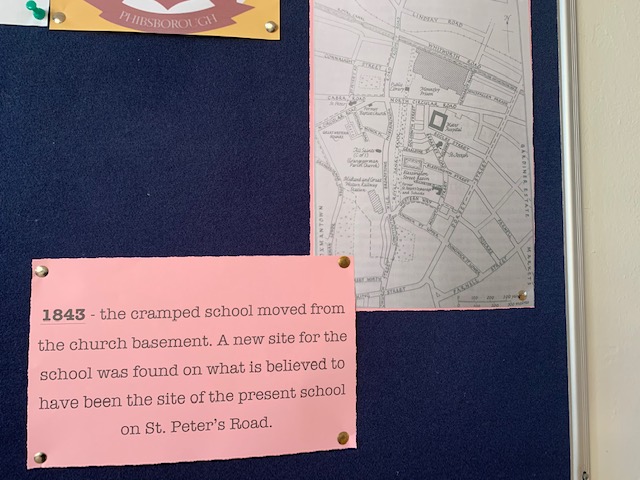
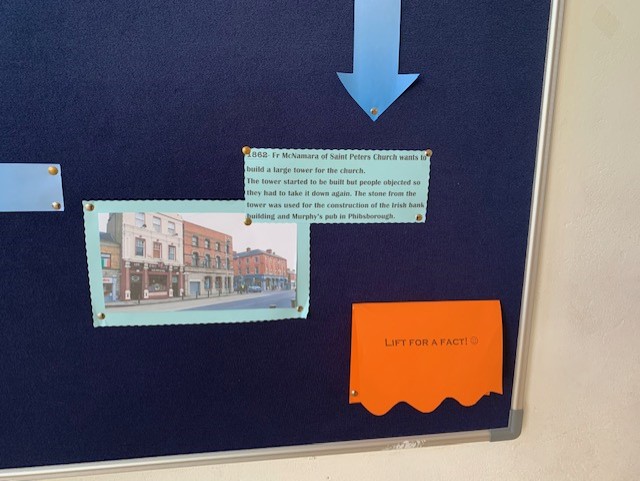
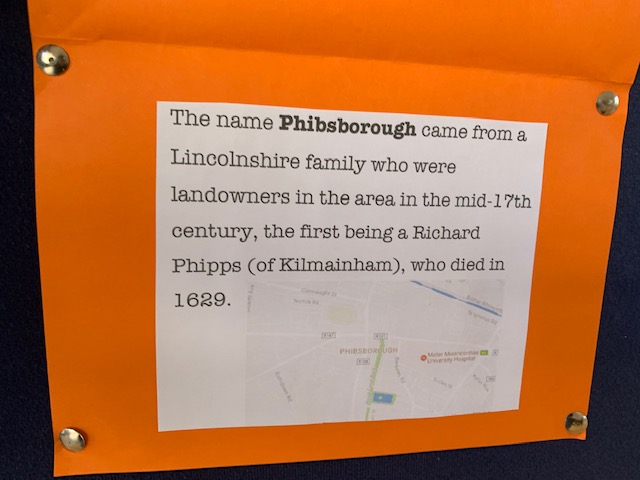
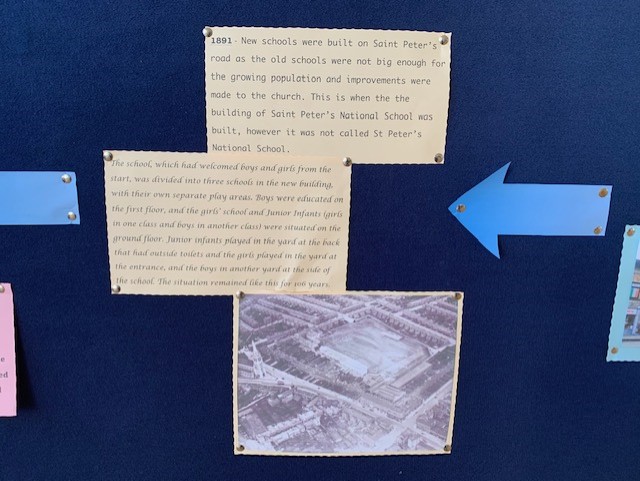
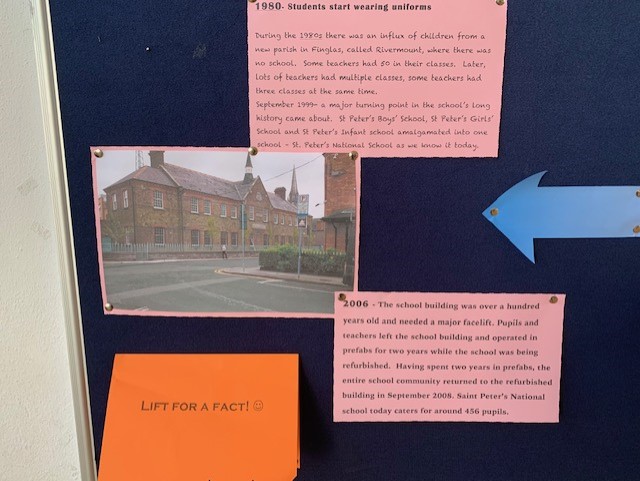
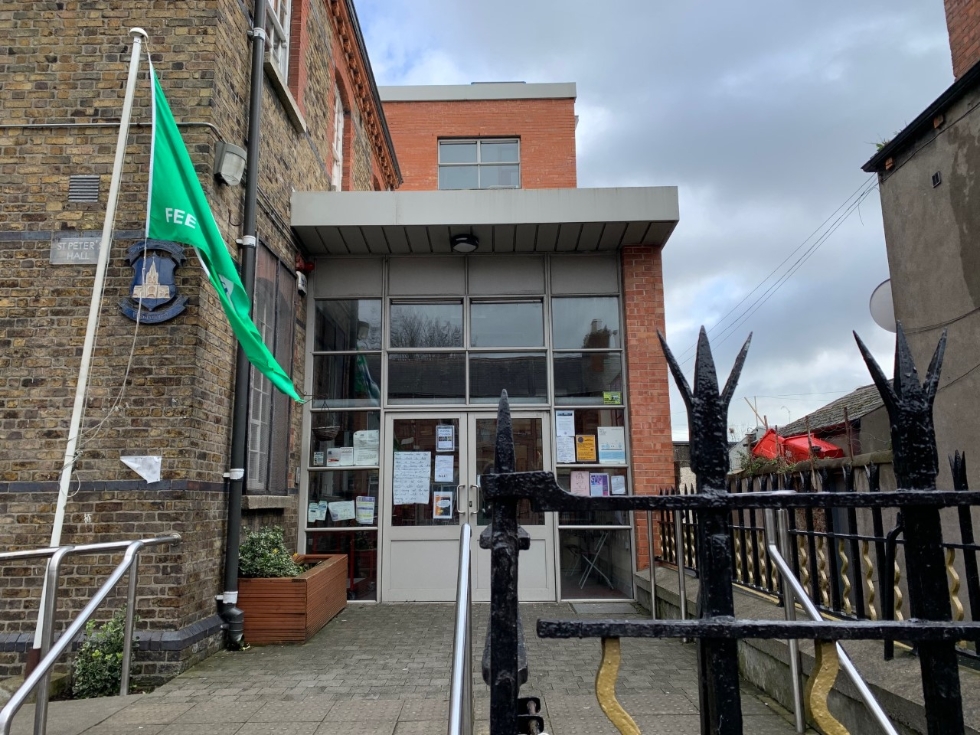
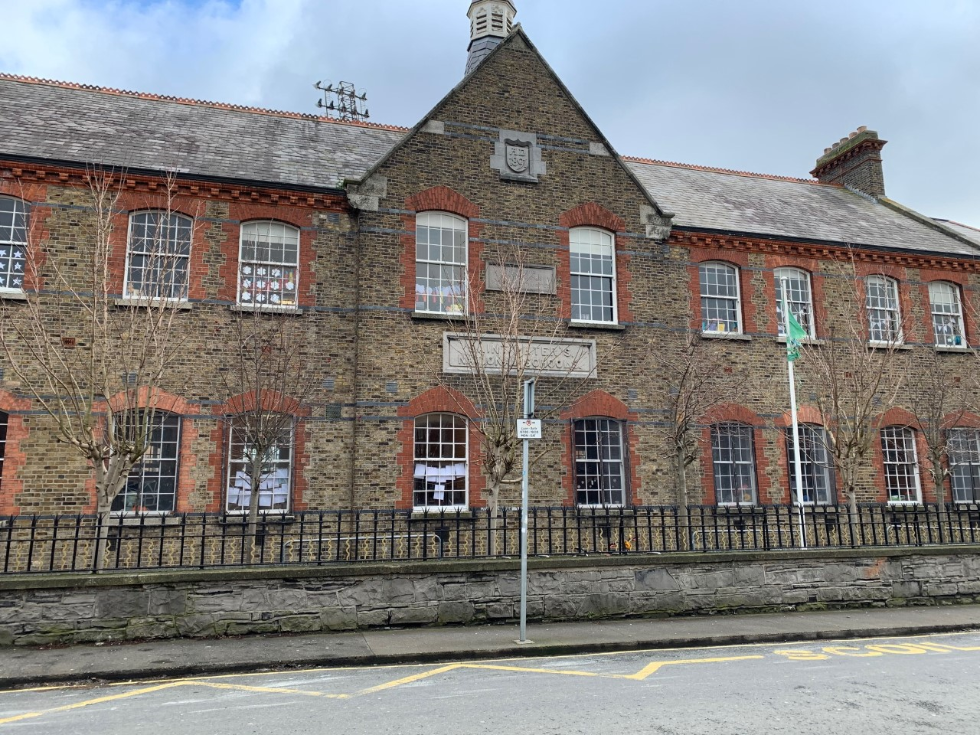
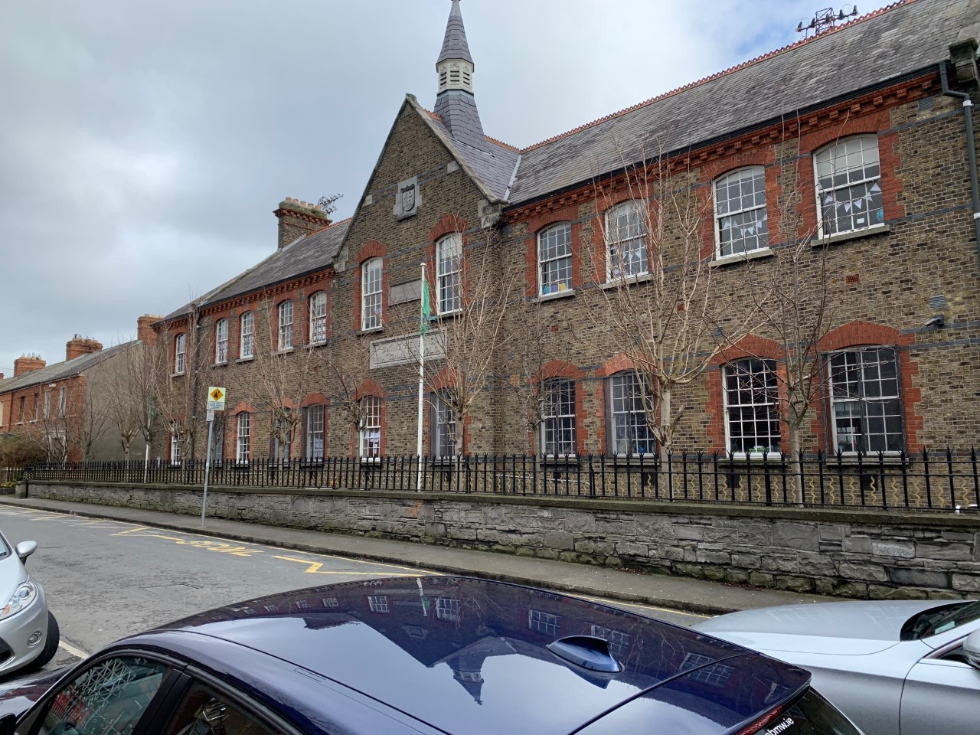
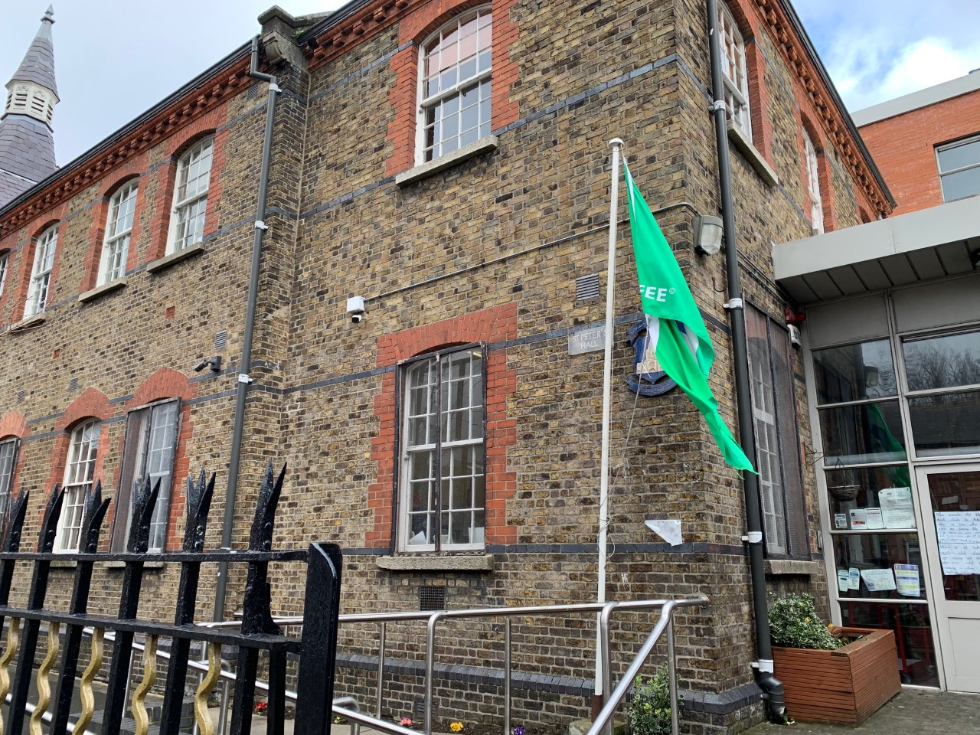
History of St. Peter's N.S.
St Peter’s school is one of the oldest in Dublin, having been established in 1891. Among its teachers was the man who hoisted the first tricolour of the Republic over the GPO on 1916 and Mrs. Finucane, the mother of well-known RTE broadcaster Marian Finucane, while past pupils include Cardinal Desmond Connell and singer Brush Shields.
The school that now stands on St Peter’s Road, adjacent to the famous Dalymount Park, did not begin on that road. At first situated in the crypt of the old church, it was Phibsborough’s first Catholic school and was set up to counter the influence of the four Protestant schools that existed in the area as well as to educate the poor children of the district. Founded by a group of concerned locals, its work in giving many of the city’s disadvantaged children a good start in life continues today.
The original establishment in the crypt of the church predated the Vincentians when a committee made up of a group of locals founded it in 1822. In October that year work began on the site at the junction of the North Circular Road and New Cabra Avenue and in September 1826, the school opened for Catechism classes on Sundays. It expanded the following February when a schoolmaster was taken on and a day school was set up for poor boys and girls. Such was the demand in the area that within a few months there were 230 boys and 160 girls on the rolls.
Two fathers, Young and Carroll, managed the school, and they also lived in and ran the church. The pair converted the upper storey of the building into a chapel. The building also accommodated the priests, with a sacristy, lending library, and schoolmaster’s kitchen and room
When the Vincentians first began their work in Phibsborough in 1838, they took over the management of the crypt school. Furthering the Catholic faith became a main aim of the order after Catholic Emancipation in 1829. For the first time in centuries, since the Penal Laws, believers could openly practice their religion.
Many of the students from St. Patrick’s Training College did their teaching practice in St. Peter’s, Phibsborough.
At Phibsborough, they decided further work was needed on the church and school, which had failed to qualify for much-needed grant assistance because of health and safety objections by the national board. In 1843, the cramped school moved from the church basement. A new site for the school was found on what is believed to have been the site of the present school on St. Peter’s Road.
The school that now stands on that site was built in 1891, as the old school was not adequate for the growing population. It was the dream of the superior of St Peter’s, who got a grant of £300 towards building expenses from the national board, and £30 for furniture, as well as teacher salaries also paid by the board.
People were asked to give weekly contributions towards the building of the school. A determined priest, Fr John Maher, organised a weekly collection to raise funds for the school. At the end of building, £412 was owed as well as other contract, legal and architect fees of over £200 and an annual charity sermon was also used to reduce the ‘heavy debt’ from the project.
The school, which had welcomed boys and girls from the start, was divided into three schools in the new building, with their own separate play areas. Boys were educated on the first floor, and the girls’ school and Junior Infants (girls in one class and boys in another class) were situated on the ground floor. Junior infants played in the yard at the back that had outside toilets and the girls played in the yard at the entrance, and the boys in another yard at the side of the school.
The situation remained like this for 106 years.
It was not until 1999 that the three schools amalgamated and became one, but many of the teachers and pupils who attended the three small schools within the building on St Peter’s Road would leave their mark on the city’s history before this. They included Gearóid O’Sullivan, a teacher at St Peter’s, originally from Skibereen, who was also a close friend of Irish rebel and architect of the Irish Free State, Michael Collins. O’Sullivan was already a member of the Gaelic League, an organisation set up to promote traditional Irish culture, when Collins joined. He soon struck up a friendship with O’Sullivan that would last many years. Within months of meeting, the pair stood side by side in the GPO during the 1916 rising.O’Sullivan was given the honour of raising the tricolour of the republic over the GPO, as he was the youngest officer present, after James Connolly ordered staff out of the building on Easter Monday. Outside the building, teacher and poet, Patrick Pearse, read the proclamation of the Irish republic to a small group of bystanders. Following the rising O’Sullivan ended up in Frongoch prison with Collins, who earned the nickname “The Big Fellow” during his time there.
Following the War of Independence and the establishment of the Irish Free State, Desmond Connell, who lived on Shandon Road, was enrolled at St Peter’s and he studied at the school in the 1930s before enrolling at Belvedere College. The future Dublin archbishop and cardinal had a long-running association with St Peter’s as his uncle William J. Lacy was also a teacher in the Boys’ School. It was fitting therefore that Desmond, when he became archbishop, should be invited to celebrate a centenary mass at the school on May 14 1992. Also present at the special service were members of the Hynes family, including grandparents and children, who had been schooled at St Peter’s through many generations. Cardinal Connell confirmed children in the church when he was made Archbishop of Dublin and the school gave him a copy of a sheet from an old register that included his name.
One of the school's tragic former students was Manchester United legend Liam Whelan, who died in the Munich plane crash in February 1958. Former parish priest Brian Doyle also made his Communion and Confirmation at St Peter’s while he was a student there, while well known RTE broadcaster, Ronan Collins, once appeared in a musical at the famous St. Peter’s Hall. Paddy Somerville’s choir in the church was very popular at this time. This Choir re-assembled for the Centenary Mass in 1992.
Pupils started wearing uniforms around 1980. They had a generic kind of uniform that you could buy in Penney’s. There was not great expense attached to it and some of the parents were thrilled that there didn’t have to be a ‘what am I wearing today effort?”
Free lunches of milk and buns, which were started by Alfie Byrne when he was City Lord Mayor between 1930 and 1939, were popular. Pupils had beef and cheese sandwiches during the week and sticky buns were the norm on Fridays!
A lot of the children were locals, many from a row of small cottages that stood where Phibsborough shopping centre now stands. During the 1980s there was an influx of children from a new parish in Finglas, called Rivermount, where there was no school. Some teachers had 50 in their classes. Later, lots of teachers had multiple classes, and Joan Quinn had three classes, which was like being in a country two-teacher school. It was really tough going.
Former principal of the Girls’ School, Ms Heslin remembers lots of good times at the school and pioneering teachers like Mossy O’Connor who organised athletics training in Santry, and whose table tennis classes attracted huge queues of students. Terry Keane, another former principal encouraged girl students to get involved in sport and Paddy Somerville, a former principal in the Boys’ School, also managed to run a choir in the church.
To raise funds in those days, a fashion show organised by the parents’ committee of the Girls’ School, to buy a computer. With the assistance of some black plastic bags and turned down Wellingtons, a brave bunch of teachers took to the catwalk. Fr Charles Sinnott (former parish priest) modelled as well. He was great! He put a scarf around his collar, wore a cap and along with Joan Quinn, the present principal; the two of them walked out together and nearly brought the place down. It was a fabulous night. It was something else! Nobody remembers how much we made, but it was a fortune to the school at that time. Both parents and children enjoyed the night.
In September 1999 a major turning point in the school’s long history came about. St Peter’s Boys’ School, St Peter’s Girls’ School and St Peter’s Infant school amalgamated into one school – St. Peter’s National School as we know it today. The first principal of the amalgamated school was Mrs. Joan Quinn. A Board of Management was put in place under the chairmanship of John Dunne. The flourishing school, that today caters for 468 pupils, mainly from Phibsborough and Cabra, got a major facelift. Having spent two years in prefabs, the entire school community took up residence in the refurbished building in September 2008. Mr. Ray Ryan (former deputy principal) was passed on the baton of leadership when he succeeded Joan, becoming principal of the school in September 2018.
So, as you can see, St. Peter’s National School is steeped in history. We continue to educate the local pupils today and maintain the strong tradition of excellence established by our predecessors.

